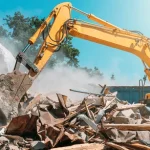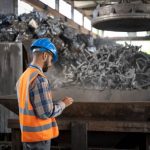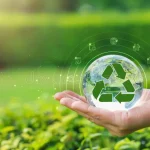Tyre Shredding and Crumb Rubber: Transforming Waste into Valuable Resources
Tyre waste is an ongoing environmental concern in Australia, with millions of tyres being discarded each year. However, through processes like tyre shredding and the production of crumb rubber, this waste is being transformed into valuable resources. These processes not only help reduce landfill waste but also support industries such as road construction and activities like community sports. At the Adelaide Waste and Recycling Centre, we are proud to contribute to this innovative recycling process by accepting used tyres at our North Plympton transfer station, where we play our own part in turning waste tyres into materials that can be used in a wide range of applications. This article will explain the tyre recycling process, the production of crumb rubber, and its diverse applications and uses.
Understanding the Tyre Shredding Process
Tyre shredding is the first step in the tyre recycling process. This involves breaking down old tyres into smaller pieces, which can be further processed to produce crumb rubber. The initial process includes removing the steel wires and fabric from the tyres. The remaining rubber is then shredded into fine particles using various types of machinery, including tyre shredders, granulators, and cracker mills.
Once the steel is removed, the shredded rubber can be processed further into different sizes of rubber granulate, also known as crumb rubber. This process reduces the volume of discarded tyres and creates material that can be used for multiple purposes.
Tyre recycling is vital, given the fact that around 50 million tyres are discarded each year in Australia, and the tyre shredding process enables us to significantly reduce this waste, helping to address the environmental impact of tyre disposal.
Crumb Rubber: A Versatile Product
Crumb rubber is the key product derived from tyre shredding, and it consists of rubber granules that come in a variety of sizes. The production of crumb rubber helps in creating a wide array of materials for different industries and community uses, while contributing to a more sustainable economy. Some of these uses include:
Road Construction and Infrastructure
One major use of crumb rubber is in road construction. When mixed with asphalt, crumb rubber enhances the durability and flexibility of road surfaces. This results in longer-lasting roads that are more resistant to cracking and wear. Moreover, crumb rubber can reduce road noise, making traffic noise more acceptable to the community.
Across Australia, there has been a growing trend to incorporate crumb rubber into road construction projects. This approach not only contributes to the creation of longer-lasting roads but also reduces the environmental impact of tyre waste, offering a smart solution for both infrastructure and waste management.
Sports Fields and Playground Surfaces
Crumb rubber is also widely used in the creation of synthetic turf fields. The rubber granules offer excellent shock absorption, making them ideal for sports fields, where athletes are at risk of injury from falls on hard surfaces. Crumb rubber fields provide cushioning that reduces impact injuries in athletics, rugby league, soccer, and other sports.
In addition to sports fields, crumb rubber is also used in school playgrounds, where it creates a safer environment for children. The soft, resilient surface prevents severe injuries caused by falls, promoting a safer and more enjoyable experience. Governments in Australia have been encouraging the use of recycled materials like crumb rubber in these types of settings as part of their social initiatives.
The Environmental Benefits of Tyre ShredRecycling
Tyre recycling, particularly through the process of tyre shredding and crumb rubber production, offers significant environmental benefits. Every year, millions of tyres end up in landfills or are illegally dumped, where they can take decades to decompose. By recycling tyres, we can divert these materials from waste sites and turn them into valuable resources.
Tyre recycling also helps conserve natural resources, as it reduces the need for new rubber production. The energy required to process recycled rubber is also significantly lower than producing new rubber. Additionally, tyre recycling mitigates the environmental risks associated with tyres in landfills, such as fire hazards and the spread of disease-carrying pests.
Transforming Waste into Valuable Resources – In Conclusion
The process of tyre shredding and the production of crumb rubber are transforming waste tyres into valuable resources. This recycling process plays an essential role in reducing tyre waste, conserving natural resources, and providing sustainable materials for industries such as road construction and infrastructure, and settings like sports fields and school playgrounds. As the demand for environmentally friendly solutions continues to grow, the tyre recycling process will only become more valuable.
Contact the Adelaide Waste and Recycling Centre
If you are interested in contributing to the tyre recycling process and want to ensure that your tyres are recycled properly, contact the Adelaide Waste and Recycling Centre today on 08 8295 5077 or via our contact form. Our experts are committed to providing sustainable recycling solutions and helping reduce the environmental impact of tyre waste.
Adelaide Waste and Recycling Centre
Our friendly operators are available at the AWRC if you need to clarify any further information.


